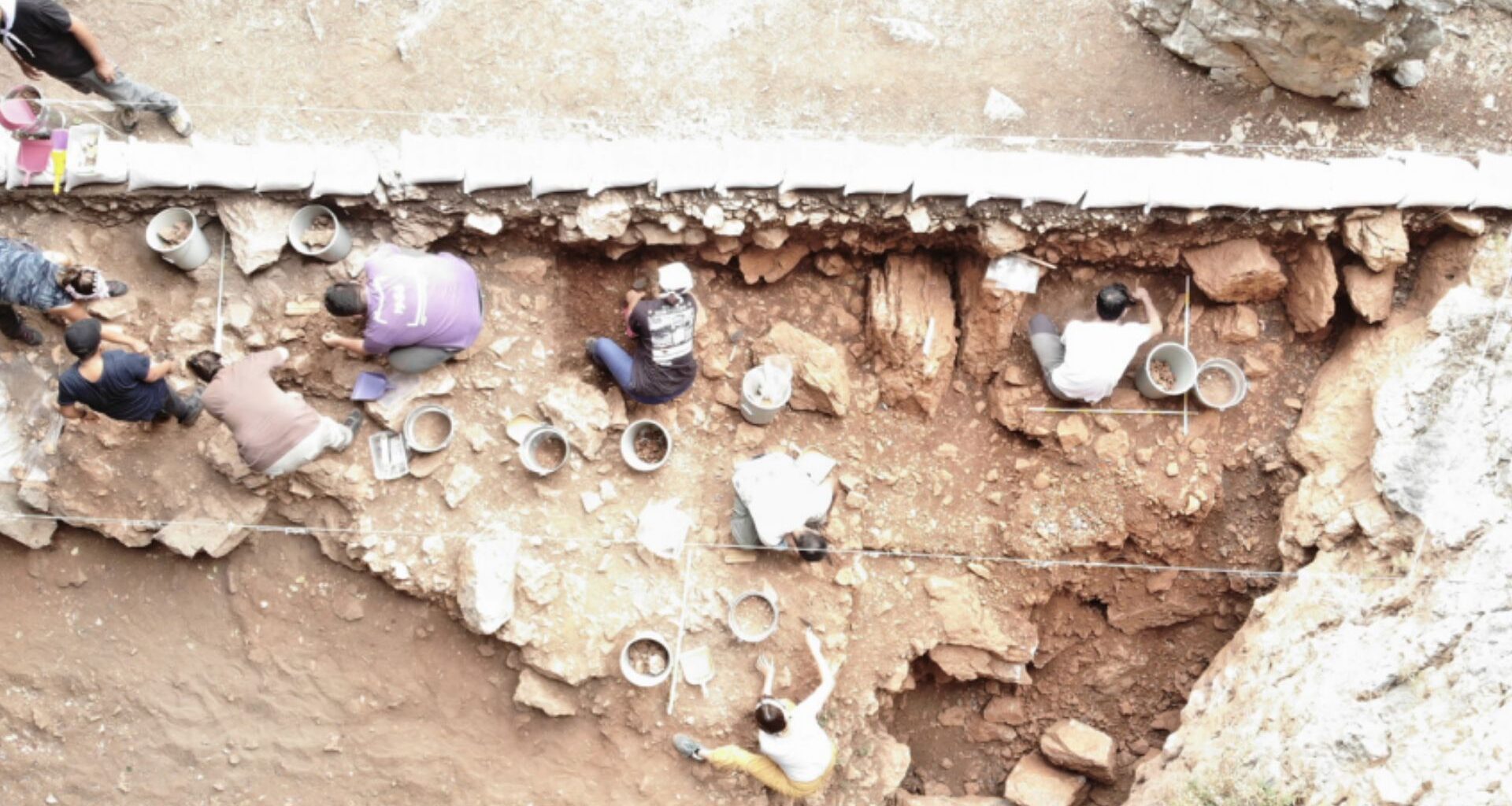Archaeologists led by Ankara University have unearthed the oldest known stone human figurines of Anatolia, dating back 19,000 years. The discovery adds an interesting chapter to Anatolia’s archaeological record.
Turkiye Today reported that the figurines were unearthed at the cave settlement of Kizilin, near Yagca in Antalya.
After extensive excavation work, Kizilin has emerged as one of Turkey’s most promising Epi-palaeolithic sites. The findings offer fresh perspectives on early human habitation in the area.
“Kızılin is a cave settlement in the Çakmak-Yağca area of Döşemealtı district in Antalya province. The settlement is 407 meters above sea level, 35 meters above the Kızılin Stream, and 107 meters above Antalya tufa plain,” the researchers described.
 Kizilin 1 Figurine. Professor Metin Kartal
Kizilin 1 Figurine. Professor Metin Kartal
Radiocarbon dating
While the surrounding prehistoric sites of Okuzini, Karain-B, and Carkini have yielded tools and ornaments, Kizilin offers something far more unique in the form of these carved human figures.
Through extensive radiocarbon dating of marine mollusk shells, researchers have confirmed human occupation here between 19,455 and 13,621 B.C.
And from these ancient layers, two figures have emerged, captivating the world with their intricate details and profound symbolism.
“Although the gender of the figurine is unknown, it appears to resemble a female head. The other figurine is a complete human representation of conjoined twins,” the researchers wrote.
The first, dubbed Kizilin 1, is a partial figurine of a human head. Its “delicately carved eyes and incised patterns,” perhaps a headdress or hair, offer a rare glimpse into early symbolic expression.
The figurine’s stylistic similarities to Upper Palaeolithic European examples hint at a possible female depiction.
Then there is Kizilin 2, a complete piece portraying a pair of conjoined human figures. Reportedly, the figure’s symmetrical grooves, creating two mirrored halves, mark it as a remarkably early portrayal of conjoined twins in Anatolian prehistory.
“These carvings predate similar Neolithic examples from Catalhoyuk and Hacilar by several millennia, reinforcing the significance of Kizilin as a centre of symbolic and artistic activity during the Epi-palaeolithic,” the report stated.
Archaeological finds at Kızılin include ground stone tools, marine mollusc ornamental beads, and bone tools, though chipped stone artifacts constitute the majority of discoveries.
This suggests that tool-making was a regular, vibrant activity at this site.
These figurines are significant because they do more than just show artistic skill; they push back the known timeline for symbolic behavior in Anatolia.
In addition, they prompt important questions about how cultures interacted and exchanged ideas between Europe and the Near East during the crucial period of the late Ice Age.
These figurines show resemblances to both European and Near Eastern Palaeolithic art but are unique enough to suggest the development of a distinct Anatolian artistic style.
A few years back, a major archaeological discovery was made at a site called Boncuklu Tarla in the Dargeçit district of Mardin, southeastern Turkey.
This site, first discovered in 2008 and undergoing excavations since 2012, has revealed a temple structure estimated to be around 11,300 years old.
